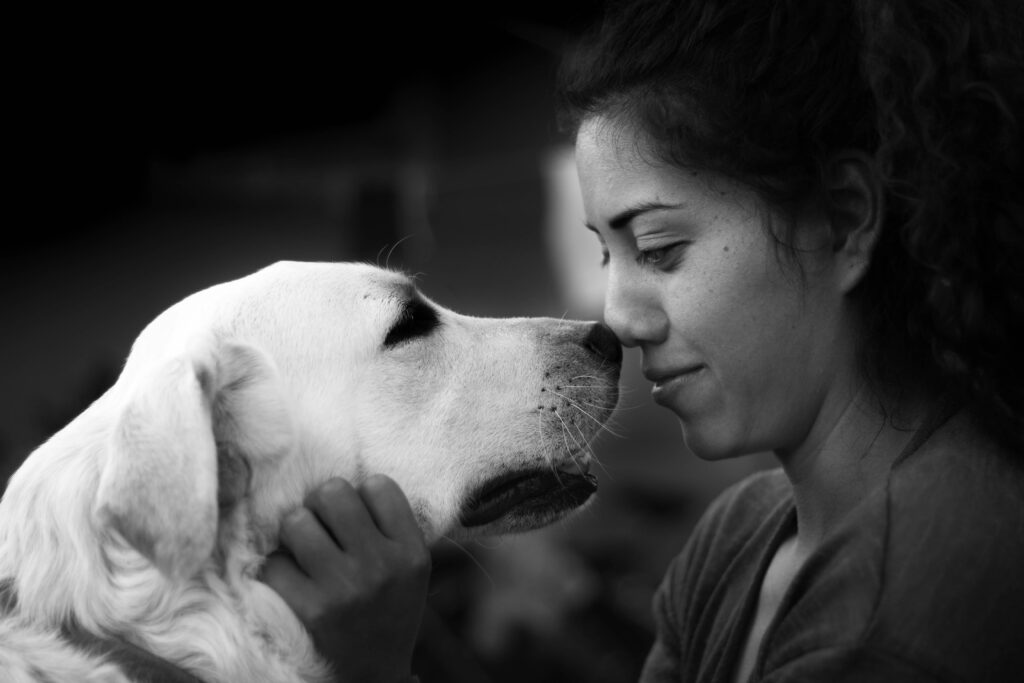Animal-Assisted Therapy for Eating Disorders: Benefits and Considerations
Animal companions undoubtedly bring us joy. But how much support can we expect from a dog, cat, or horse? Animal-assisted therapy (AAT) is the use of trained animals to help patients during their healing process for many types of mental illnesses. AAT can be a beneficial addition to the treatment plan for those living with eating disorders like Anorexia Nervosa, Bulimia Nervosa, Binge Eating Disorder, and others. Like any therapeutic modality, many of the benefits of AAT are backed by research, but it still may not be the right fit for everyone. Here, we share some of the findings from AAT research to help you consider if animal-assisted therapy may be a helpful intervention for you or a loved one.
Understanding Animal-Assisted Therapy
Animal-assisted therapy intentionally connects patients with animals to help improve their mental, emotional, and physical well-being. AAT is facilitated by mental health specialists and tracked with the same attention to qualitative and quantitative data as other therapeutic modalities. This curated human-animal interaction will be with animals that have received specific training, including dogs, cats, horses, and dolphins.
From Wild Animal to Therapy Dog: How We Got to AAT
Humans have been reaping the therapeutic benefits of relationships with animals for as long as we’ve domesticated them. For potentially 15,000 years, humans have had relationships with other animals. While early domestication likely focused on practical purposes—such as guarding property or controlling pests—these bonds provided emotional and psychological benefits as well. Across cultures, humans have also used animal connections to explain behavior. For example, the Ojibwa people of North America believe in spirits that take anthropomorphic animal forms, called manito, from whom they seek advice. Shamanic and animist beliefs similar to these are found across the globe.
By the 17th century, a shift occurred in Europe as families began keeping pets to inspire tenderness and compassion in children. These benefits were soon recognized in medical settings. Florence Nightingale observed that a pet could make a good companion for the sick, noting its positive effects on emotional well-being.
In the early 20th century, psychotherapy began incorporating animals. Freud believed that the “wild” or “irrational” parts of ourselves needed balance, an idea that inspired Boris Levinson’s work in creating positive relationships between patients and animals. Levinson, considered a pioneer of AAT, believed animals could reinforce our inner selves. He wrote in Pets and Human Development that “we need animals as allies to reinforce our inner selves.”
While Levinson’s ideas may reflect an outdated view of human-animal relationships, his work established a foundation for modern AAT. Today, we recognize the profound impact animals—especially domesticated ones like dogs—can have on human emotional and physical health.
The Benefits of Animal-Assisted Therapy for Eating Disorder Treatment
The presence of animals in treating mental illnesses promotes feelings of calm and hope for patients of all ages. Additionally, animals can help nurture the connection between the patient and their therapist. Animal-assisted interventions also reduce barriers to communication, offering a sense of comfort and connection that fosters deeper engagement in therapy.
Emotional Regulation and Stress Relief
In meta-analyses of the benefits of AAT for mental health treatment, researchers found that AAT can reduce symptoms of depression at a biochemical level. Interacting with an animal triggers the release of neurotransmitters like serotonin and dopamine, which improve mood and suppress anxiety. This improved emotional regulation supports eating disorder treatment and complements modalities like Cognitive Behavioral Therapy (CBT) or Dialectical Behavioral Therapy (DBT).
Other physical reactions to time with animals include lowered blood pressure and pulse. Additionally, time with the animals improved patients’ self-esteem along with other mental and emotional benefits. Those who experienced AAT experienced decreases in feelings of isolation, improved empathy, and an enhanced self-image.
Building Trust and Rapport
AAT can synergistically support other eating disorder treatments by building trust between the patient and therapist. Strong rapport between healthcare providers and patients is critical for effective treatment.
For example, equine therapy—working with horses—helps individuals practice setting boundaries and reading non-verbal cues. These skills are transferable to human interactions, improving overall interpersonal functioning.
Cognitive Flexibility and Letting Go of Control
A 2024 systematic review specifically focused on AAT for eating disorder treatment found that AAT improved cognitive flexibility and confidence, two important elements for recovery. Patients also reported that AAT helped them relinquish the control they attempted to assert over their lives through disordered eating behaviors. By providing a safe and nurturing environment, AAT can help patients develop healthier coping mechanisms and a renewed sense of self-worth.
Drawbacks? Other Aspects of Animal-Assisted Therapy to Consider
At The Alliance, we are dedicated to sharing evidence-based information about various eating disorder treatment options. However, no single treatment is a magic solution, and this includes animal-assisted therapy.
The term “animal-assisted” itself suggests that AAT is not a standalone treatment. Trained mental health and healthcare professionals must always be integral to the treatment process. AAT works best as a complementary technique alongside other modalities, such as traditional talk therapy, support groups, and psychiatry.
Suitability and Ethical Considerations
Animal-assisted therapy may not be suitable for everyone. Factors such as allergies, fear of animals, or cultural attitudes toward animals must be taken into account. Furthermore, the well-being of the animals involved is critical. Therapy animals should be properly trained and certified, and their interactions with clients must be monitored to prevent stress or harm to either party. Best practices in AAT emphasize the need for ethical treatment of animals and ongoing training for therapists.
Building an Eating Disorder Treatment Plan
If you or a loved one is struggling with an eating disorder, navigating the sea of treatment options can feel overwhelming. There is no one-size-fits-all solution for treatment, and finding the right care often involves combining different approaches tailored to individual needs. Animal-assisted therapy offers a unique and compassionate avenue for healing, complementing traditional treatments and empowering patients in their recovery process.
At The Alliance, we aim to provide personalized guidance and connect you with treatment resources that honor your identity and experience. If you’re curious about animal-assisted therapy or any other treatment options, our licensed mental health professionals are here to help. Reach out to our helpline for support—because no one should have to face an eating disorder alone.



